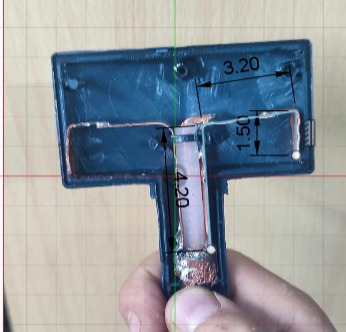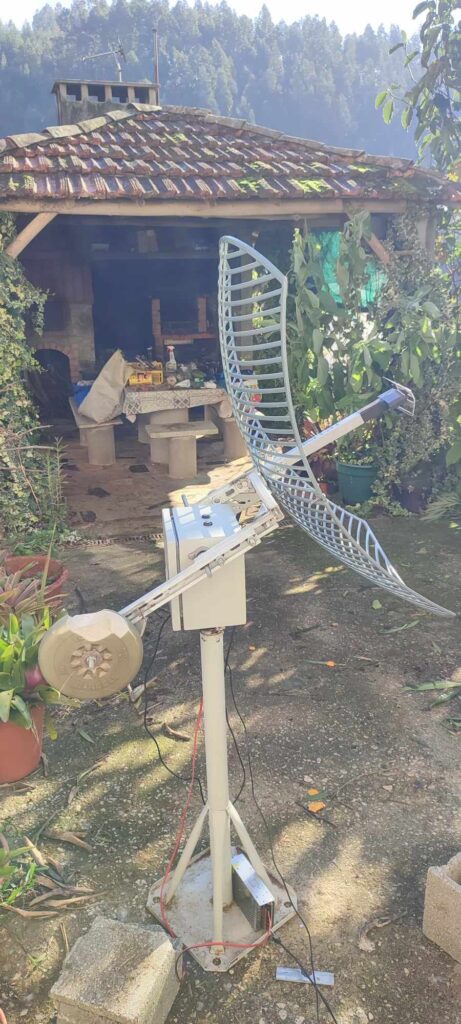Modifying a 2.4 GHz WiFi Grid Antenna for Improved 1.7 GHz Reception + DIY Rotator Instructions
People have had much success in receiving L-band weather satellites like GOES and polar orbiting HRPT satellites using 2.4 GHz WiFi grid dishes, even though their 1.7 GHz signals are considered out of band for the WiFi grid dish feed. While this works most of the time, reception can be sometimes weak and borderline.
Over on Facebook and usradioguy.com, António Pereira has been sharing his mod which optimizes a 2.4 GHz feed for 1.7 GHz instead. The mod involves removing the enclosure of the feed which requires a heat gun to remove the glue, extending the feed's dipole by soldering on copper extension strips, tuning the dipole with a VNA, and finally tweaking the focal point. This results in an optimized L-band weather satellite antenna.
António Pereira has also shared instructions for creating an antenna rotator from an ESP32, Arduino Nano, two NEMA 23 stepper motors, two stepper controllers, two 50:1 worm gearboxes, and two optical homing switches, as well as power supplies for the motors and circuits. He also shares the Arduino code that he's written.
We also note that we currently are crowd funding for our Discovery Dish, which will be a ready to use satellite dish system for L-band weather satellites, as well as Inmarsat and hydrogen line radio astronomy. Check it out on Crowd Supply.


Hello Antonio – I’m currently trying to set up a GOES receiving station similar to yours. I investigated my dipole inside the black plastic enclosure to see if I can modify it – which I can.
The centre coax lead is soldered to one dipole strip leg and the braid is soldered to the other dipole. What surprised me however, is that both dipole strips are then shorted together by a foil strip at the base This means that they are DC shorted – is that correct? This shorting causes by LNA (Nooelec) to not work. Can I cut the shorting or do I need a DC blocking connector in the antenna feed? – Thanks! John Madden
Hi, I’m the one who built this, I just want to point out that I haven’t written the Arduino code myself as I’m a complete noob in programming, the code is a Satnogs code but there were some modifications done to it with help from people on forums, there were some bug fixes as the original code would have buffer overflows when micro-stepping was implemented. I also found the meridian flip fix on another forum. The code for the ESP32 serial bridge was also found online.
Sources: community.libre.space/t/solved-the-meridian-flip-problem/3266
forum.arduino.cc/t/i-need-help-with-micro-stepping/1189061/59
github.com/yuri-rage/ESP-Serial-Bridge
I don’t want to take credit for other people’s work 🙂